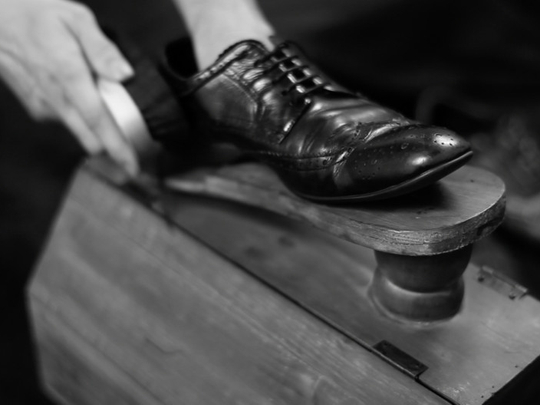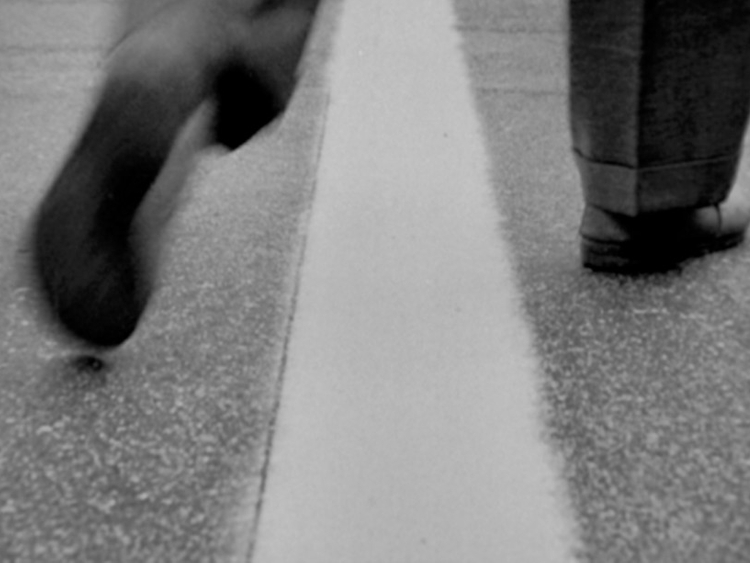
Mounir Fatmi is interested in exploring the form and symbolic meaning of the circle and in investigating the past to understand the present. He often uses obsolete consumer objects, such as coaxial cables, to create circular forms symbolising the past and the continuous cycle of change in the world. In his first solo show in Dubai, Inside the Fire Circle, the French-Moroccan artist goes back to history to comment on contemporary society and to highlight the fact that our failure to learn from the past results in history repeating itself in an infinite circle.
The show is inspired by the story of an amazing experiment conducted by John Howard Griffin, an American journalist, writer and activist from Texas, who was known for his fight against racial discrimination during the Civil Rights Movement. In the late 1950s, Griffin underwent a series of UV treatments and took various medications to turn his skin black and journeyed through the Deep South as a black man to experience what life was like for black people in a segregated society. He later wrote about the hardship, discrimination and rejection he faced in his book Black Like Me.
“I discovered this little-known story while researching the Black Panther Movement and African American history for an earlier project. The idea of a white man changing his skin colour to understand the violence of discrimination is so extreme, yet so poetic. Griffin’s experiences as a black man were terrible, and despite all his qualifications, the only job he could get as a black man was of a shoe shine. The sad thing is that we have forgotten that history, and today once again we see people judging each other based on skin colour, language or religion, and politicians with divisive, racist messages becoming popular. We are caught inside this circle of fire, repeating the same mistakes and not learning from them. I want to question how we let this happen, and to appeal to people to break this vicious cycle,” Fatmi says.
The centrepiece of the show is an installation titled, Inside the Fire Circle, comprising a row of old typewriters, like the one Griffin used, connected with jumper cables to blank sheets of paper. “I want to jump start people out of their apathy, so that they can learn from the past, and be actively involved in writing a new and different story on these blank sheets,” the artist says.
Most of the works in the show are based on images from the Griffin archive, maintained by his biographer Roberto Bonazzi. These include a series of 10 photographs titled, As A Black Man, featuring a portrait of Griffin, with each image printed in different shades to show his transformation from white to grey to black. Viewers can see their own reflection in the mirror-like frames Fatmi has used, adding another layer to the work. The idea of self-reflection is also there in an image which captures the moment when Griffin first looked at himself in the mirror as a black man.
Another set of black and white pictures titled, Crossing the Line, depict a man’s legs stepping over a white line on a street, signifying the notion of crossing over from white to black, light to dark, being privileged to being an outcast. These are stills from a video, which is also part of the show.
The video has scenes from a documentary showing how difficult it was for Griffin to do simple things such as go to a restaurant, use a public toilet, take a bus, or even walk on the streets at night as a black man.
Referring to the only job Griffin could find, Fatmi has combined this imagery with shots of himself polishing shoes, dabbing shoe polish on his face and holding up the shiny shoes like a mirror for civil society to reflect on its uncivilised behaviour. The video ends with Griffin smashing a mirror marking the moment when he decided to be white again and tell the world about his experiences.
Other works in the show include a series of wall sculptures, titled The Kissing Circles, where Fatmi has created intertwined concentric circles from coaxial cable, reflecting his interest in obsolete objects.
“One can get lost in these circles, which seem to have no centre, just as we tend to lose our centre, when we get caught in the chaos and repetitive cycle of daily life. These cables are meaningful for me because I come from a poor family in Tangier, and can never forget the excitement of getting cable TV at home, which changed our lives by bringing us information about what is happening outside our little world; but the next generation will have no idea about the purpose of these cables. This show is about history and archival materials, and these artworks are like archives themselves,” Fatmi says.
The TV cables are also linked to an image of Griffin being interviewed by legendary American newscaster Mike Wallace, where the artist has deliberately blackened Griffin’s face. Both men look uncomfortable, talking about racism, a taboo subject in those times.
“This is the only existing archive of such a historic moment, and through this work I want to raise questions about selective preservation and erasure of history,” Fatmi says.
Jyoti Kalsi is an arts-enthusiast based in Dubai.
Inside the Fire Circle will run at Lawrie Shabibi Gallery, in Alserkal Avenue, Al Quoz until April 27.














